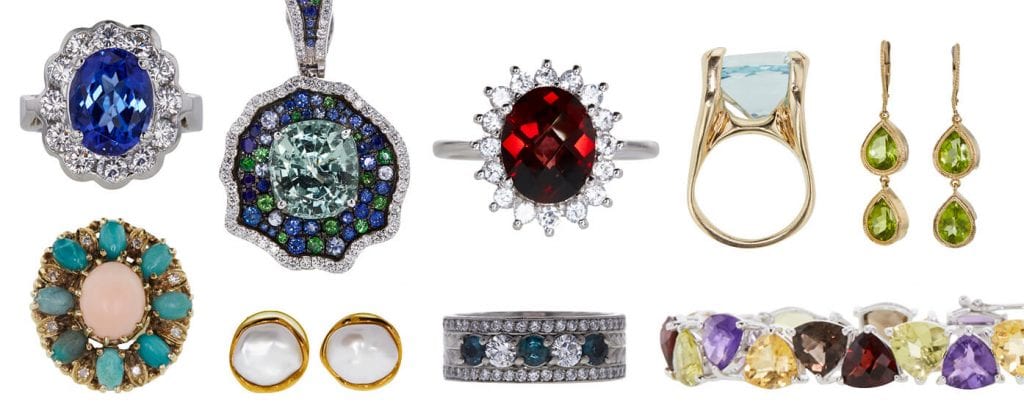
For most little girls, their first piece of fine jewelry was likely to be a religious medallion or a birthstone. I had a tiny gold Star of David and a tiny gold heart necklace (sadly, both got lost) and somewhere along the line I got my first amethyst. I don’t recall exactly when I learned that amethyst was my birthstone—or even what that piece of jewelry was—but I remember my mother and my grandmother telling me my birthstone was amethyst. I do recall that my first pair of pierced earrings (at age 11) were amethyst studs set in 14k gold—and I do still have those.
From ancient times, people have ascribed mystical powers to gemstones. The concept of birthstones is believed to date back to the breastplate of Aaron, brother of Moses and the high priest of the Jews. Aaron’s holy garments included a breastplate containing 12 gemstones set in gold, representing the 12 tribes of Israel, although those stones don’t correspond to the familiar modern birthstone calendar.
Despite being spelled out in Exodus 28:15, there’s debate among both religious scholars and gemologists as to what the breastplate stones really were. But the birthstone concept also is found in other customs and belief systems, not just Judeo-Christian tradition.
Over the years, new stones were added to certain months as alternative birthstones. Why, we don’t know. Maybe because the original stone is very rare—or just not popular. But all the stones, both traditional and modern, have some fascinating history and lore. Here’s just a quick sampling of some of the fun lore surrounding each.
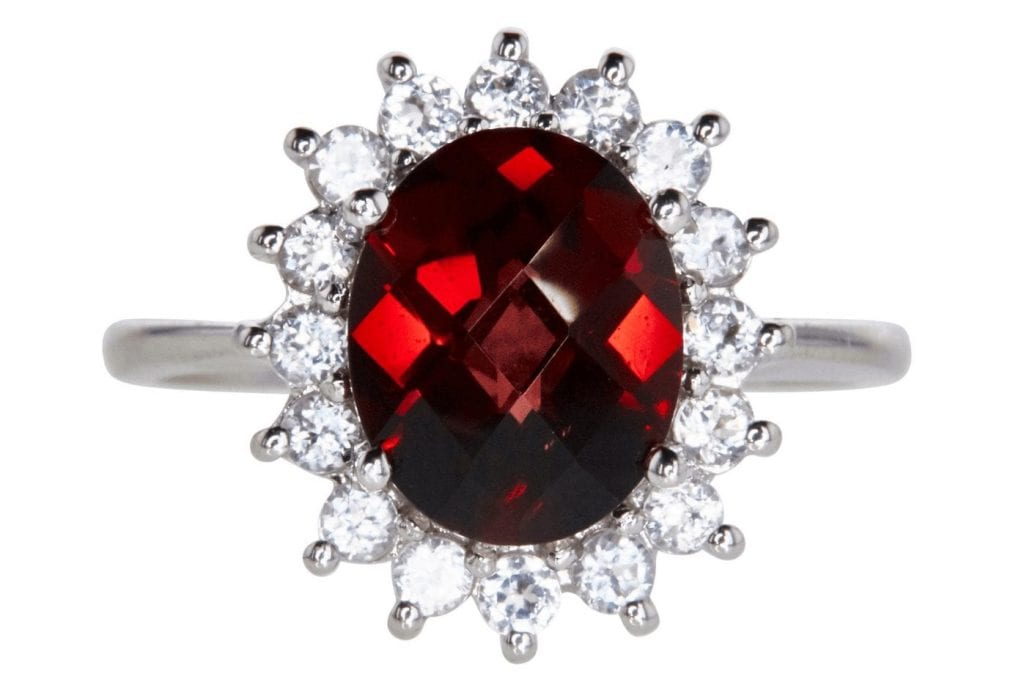
Garnet comes in a tremendous range of colors, not just the brownish red you normally think of. My faves? Hard to choose between tsavorite (vivid green), rhodolite (pink) or Mandarin (orange). Garnet is found all around the world, and—fun fact—the presence of garnets in the ground often indicates there are diamonds not far away! Garnet was believed to have power to bring the wearer good health, wealth, and happiness.
Wearing this purple quartz is believed to make you both sharp at business and immune to drunkenness. In Greek mythology, Amethyst was a good religious girl on her way to pay homage to the goddess Diana when Bacchus, the god of wine, sent tigers after her for refusing to drink. To save the maiden from being eaten, Diana turned Amethyst into a statue of white stone. In regret, Bacchus spilled his wine on the ground, where the statue absorbed it and turned a beautiful purple. Found mostly in South America and Africa, amethyst was very costly at one time but now can be had much more affordably.
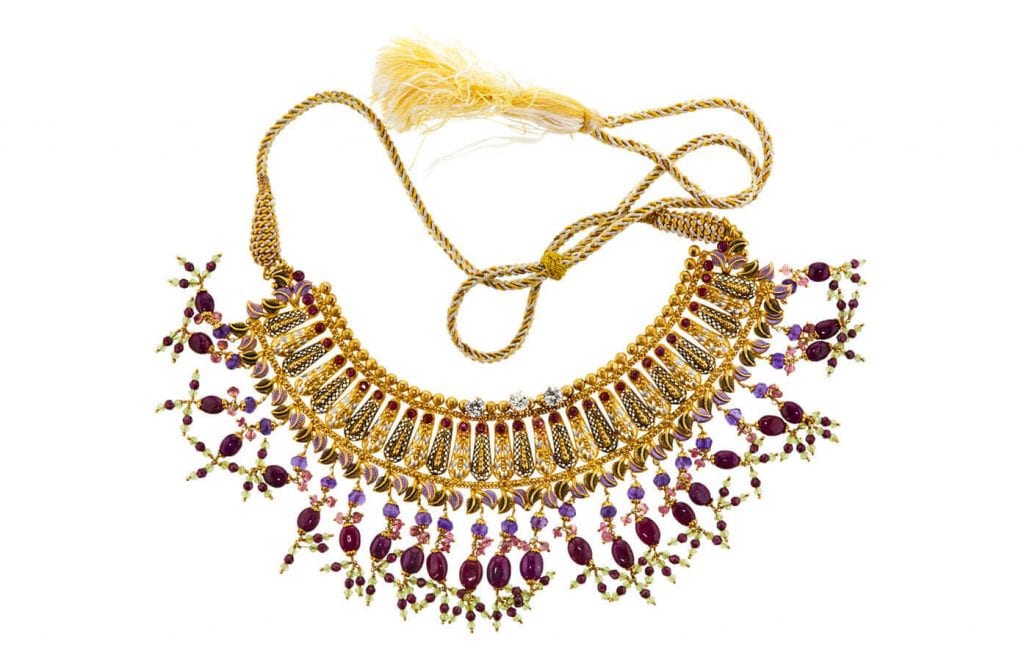
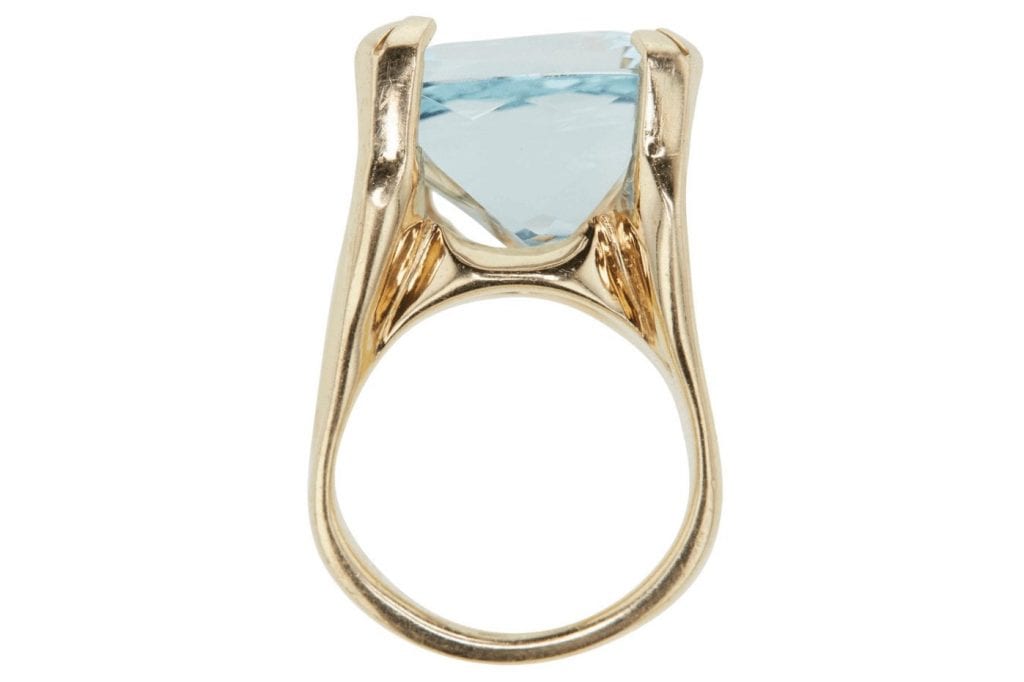
March’s two birthstones look vastly different: the traditional aquamarine, a beryl (cousin to emerald), was named for the sea because of its calming light blue color. Not surprisingly, it was believed to protect sailors and guarantee a safe voyage. In the Middle Ages, many believed that the simple act of wearing aquamarine was an antidote to poisoning. Other beliefs include reconciling differences between enemies and re-awakening love.

Bloodstone (also called heliotrope) is in the chalcedony family, and it is typically dark green flecked with spots of vivid red. It was believed to have healing powers, especially for blood disorders, and to increase strength and invincibility. Legend says it was created when drops of Christ’s blood stained some jasper at the foot of the cross, but today most bloodstone comes from India, with some from Brazil, China, Australia, and the United States.
Diamond’s name comes from the Greek word “adamas,” which means “invincible” or “unbreakable.” While it’s impossible to scratch the surface of a diamond with anything but another diamond, many of us sadly know it’s not unbreakable.
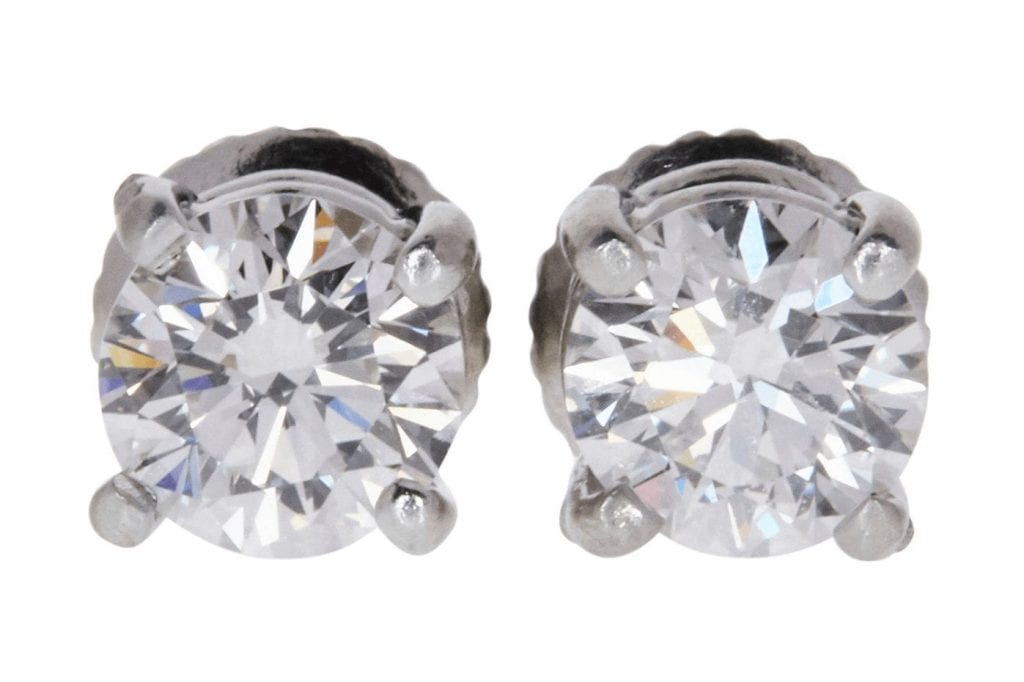
Diamonds come in every color of the rainbow and then some, even including black, gray, and brown. Originally found in India and later Brazil, those two sources declined and today most diamonds mainly come from sub-Saharan Africa, Australia, Russia and, more recently, Canada.
With its vivid green color, emerald is perfect for a spring birthstone as everything comes back to bloom. Legend says emeralds make the wearer more intelligent and clever, and at one time it was believed to cure such ailments as cholera and malaria.
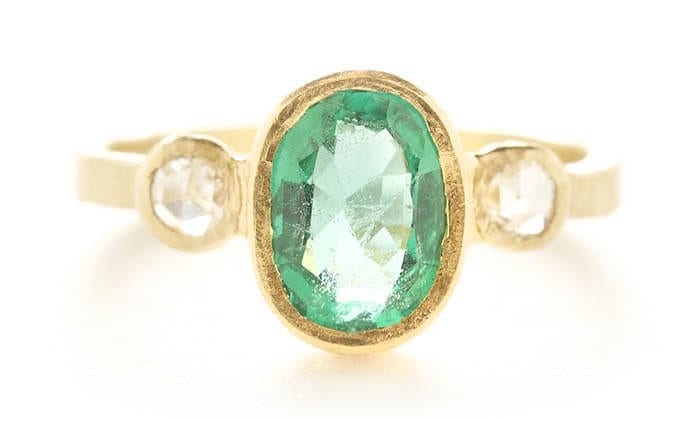
Like its blue cousin aquamarine, emerald is a beryl. It’s primarily found in Colombia, South America, and Zambia, Africa; also in Afghanistan and Pakistan. The blue-hued green of Colombian emeralds—especially those from the Muzo mine—is the most highly prized color. Emeralds are somewhat delicate; never put one in an ultrasonic or steam cleaner.
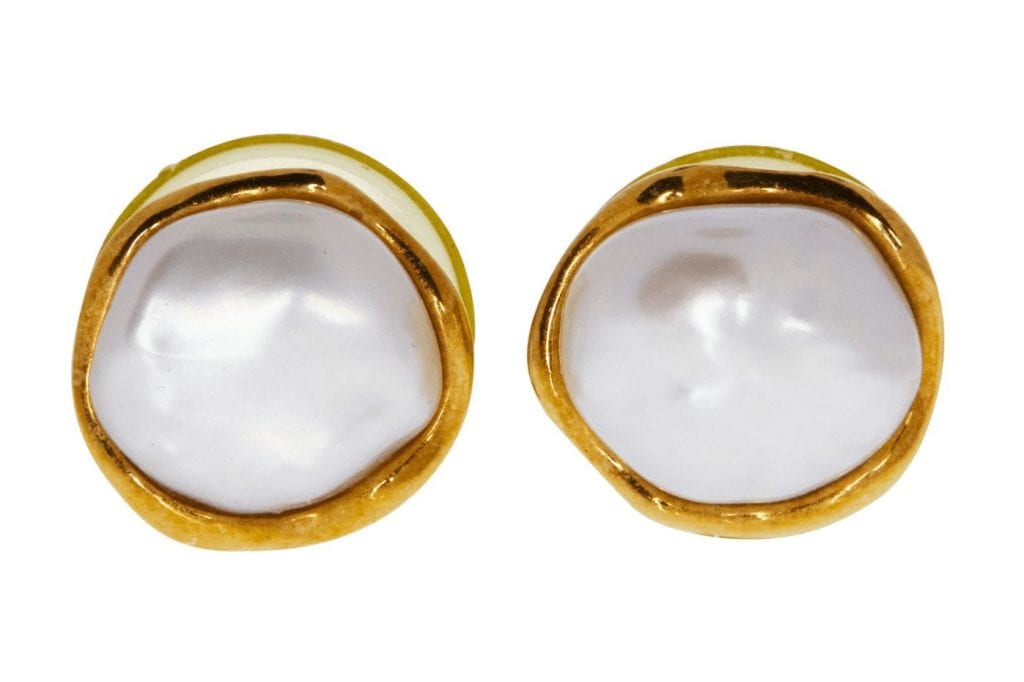
The classic June birthstone, pearls are associated with purity, humility and innocence, and thus are popular bridal attire. The only organic gem, grown in the tissue of a living mollusk, in ancient times pearls were thought to have health benefits, particularly for alleviating indigestion and hemorrhages. The indigestion part, at least, makes sense: pearls are about 70% to 80% calcium, the same stuff that’s in modern antacids.
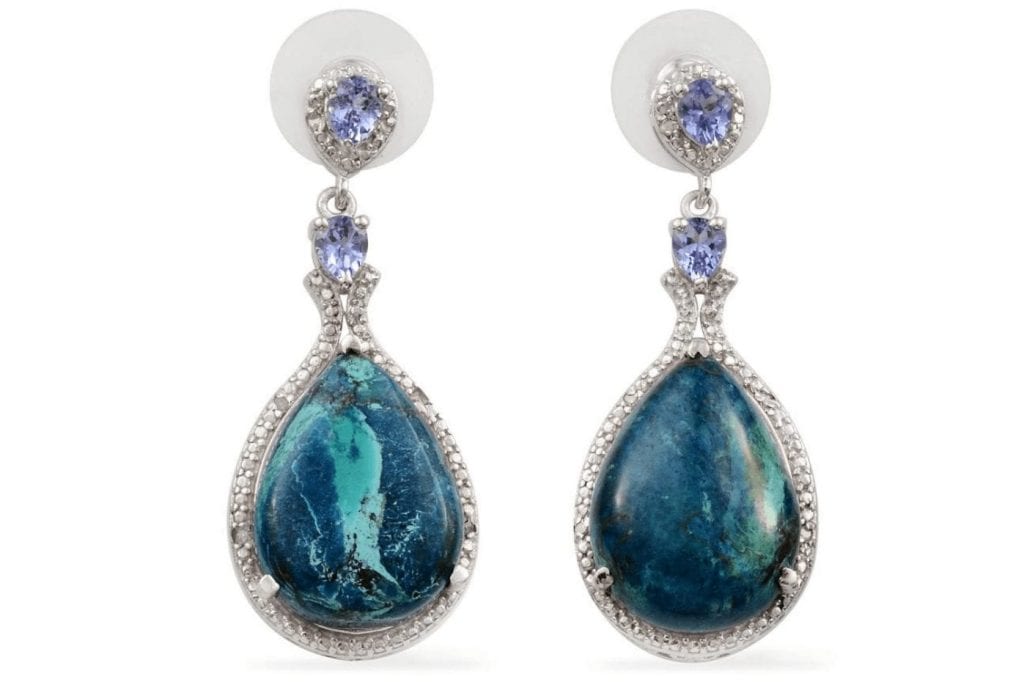
Moonstone, one of the alternate birthstones for June, is a feldspar that gives off a soft glow evocative of moonlight. Moonstone is often associated with love, passion, and fertility, and believed to bring great luck. Highly popular in Art Nouveau jewelry, it made comebacks in 1960s hippie culture and 1990s New Age culture. Moonstone is found mostly in India and Sri Lanka, but also in other parts of the world.
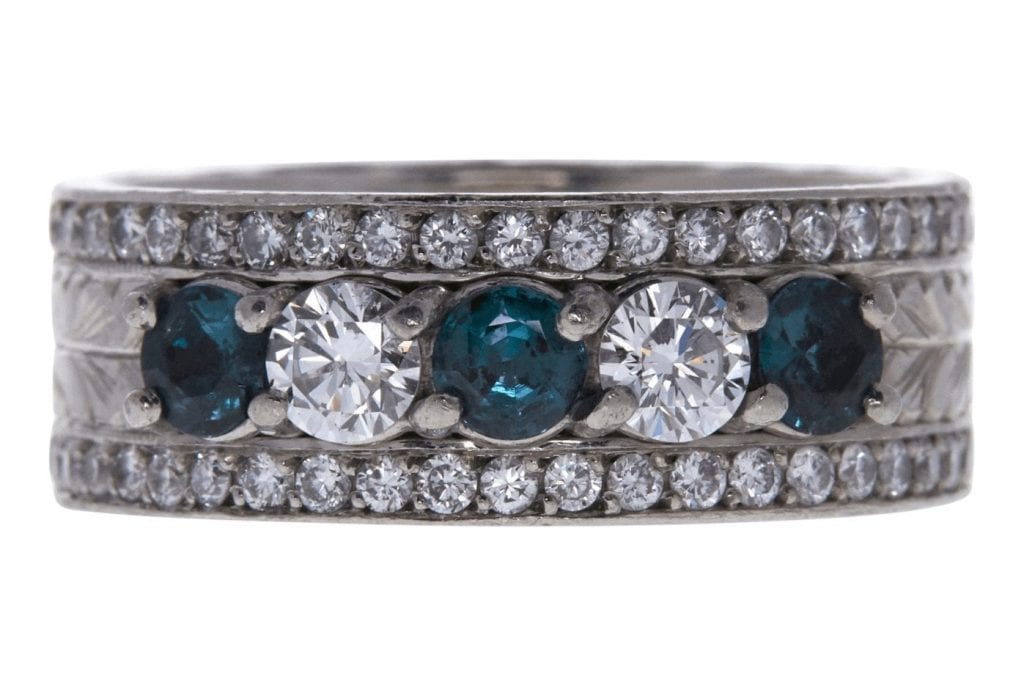
Alexandrite—named for Russian Tsar Alexander II—changes color in different light. A chrysoberyl, it looks bluish green in daylight or fluorescent light, and deep red in incandescent light. Sometimes a long, thin inclusion produces a “cat’s eye” effect, called chatoyency. The original deposit discovered in Russia’s Ural mountains is long gone; today Alexandrite comes from Brazil, Sri Lanka, and eastern Africa.
Brilliant red ruby represents “life blood” power, energy, passion, love, and success. Ancients believed rubies could predict misfortune or danger, or cure inflammatory diseases and soothe anger. Ruby is corundum, an identical mineral to its twin, sapphire. In every other color, corundum is called sapphire; only when it’s a vivid red is it called ruby. And of course, it costs more. The best rubies come from Burma (now Myanmar), but for a long time human rights sanctions against the country meant no new ruby imports. Luckily, in the late 20th century Vietnam (after the war) emerged as another major source for rubies.
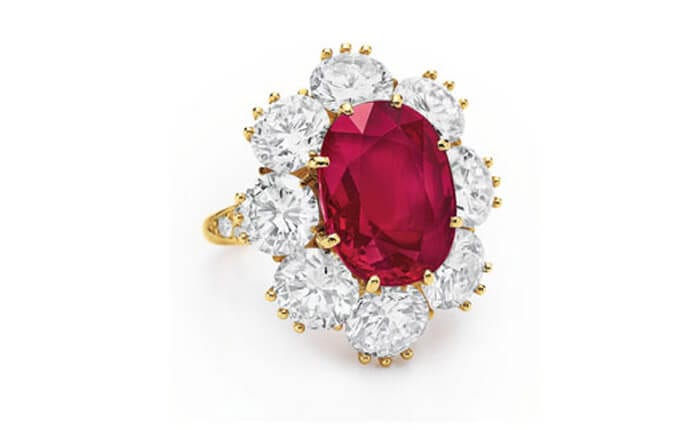
Sardonyx is the original August birthstone. Sar-what? Right! Sardonyx is a blend of two types of chalcedony (a variety of quartz): sard and onyx, where brown/red/orange sard is banded with white or black onyx. The stone typically was used for ancient seals and signet rings; its other popular use in jewelry is for carving into cameos. It is believed to be one of the stones in the High Priest’s breastplate (per the Old Testament), and to represent the strength of spiritual life. It is associated with protection in battle, courage, happiness, and positive communication in marriage and partnerships.
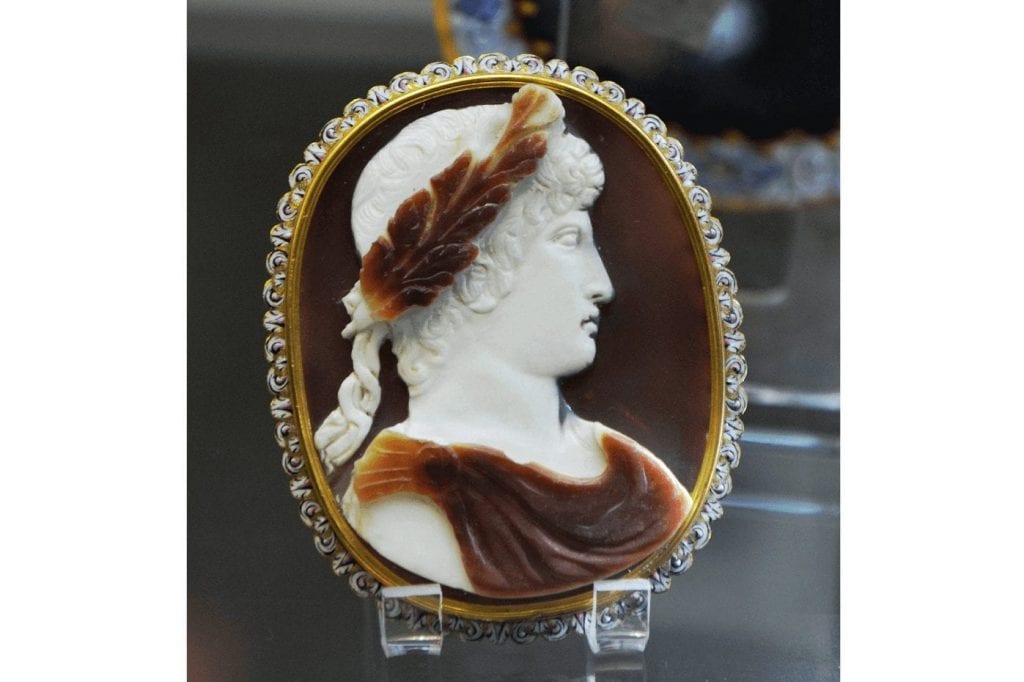
The best known August birthstone is peridot, also called olivine for its yellowish-green color. The gem is found in many places on earth and even in outer space, evidenced by bits found in meteorites. Most gem-quality peridot is from Asia or the southwestern United States. As a protective talisman, peridot is believed to shield its owner from evil spirits and “terrors of the night.” As a piece of jewelry, though, it’s delicate: save your peridot ring for special occasions, not everyday wear, and never use a steam or ultrasonic cleaner on it. Just a soft brush and a little dish soap is enough—and important to use if you have acidic skin.

Finally, spinel joined the ranks of August birthstones only three years ago in 2016. Spinel, which occurs in reds, pinks, oranges, purples, blues, and blue-green, is a stone of oft-mistaken identity. Once scientific advancements made it possible to distinguish chemical and mineralogical differences, many famous “rubies” were later discovered to be spinels, including a super-major one in the British Crown Jewels. Oopsie!
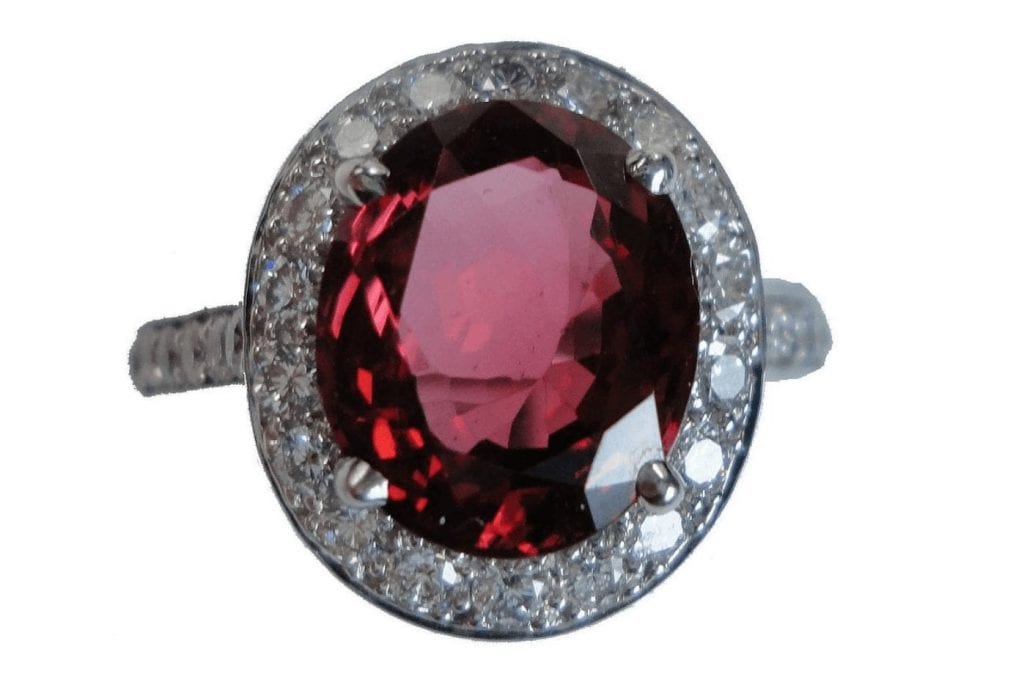
Red spinel, like other red gems, was hailed in history as a remedy for blood loss and inflammatory diseases, and believed to ease anger and promote harmony. Most spinel today comes from Asia; both far east and Asia Minor.
Like its identical twin ruby, sapphire is corundum that occurs in every conceivable color, except red. Because, as we know, then it’s called ruby. Sapphire traditionally symbolized sincerity, truth, faithfulness, and nobility and for centuries adorned royalty and the robes of the clergy. The elite of ancient Greece and Rome believed that blue sapphires protected their owners from harm and envy, and it was reputed to have healing powers as well, particularly diseases of the eyes or skin. Like aquamarine, sapphire birthstone was also thought to be an antidote to poison. The most prized sapphires come from Kashmir, a region in the Himalayas. It’s also found in Myanmar and Sri Lanka, Cambodia, and even in Montana in the USA.
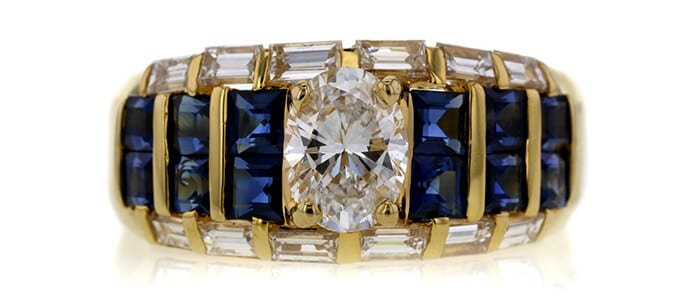

Both opal and tourmaline come in vast hues and as such were believed to have been created from rainbows. Opal, the traditional October birthstone, is believed to have originated in India, while Bedouins once believed opal fell from the sky during thunderstorms. Ancient Greeks thought opals bestowed the gift of prophesy and protection from disease, while European tradition saw it as a symbol of purity, hope and truth. While opals are found almost all over the world, the biggest and best-known source is Australia.
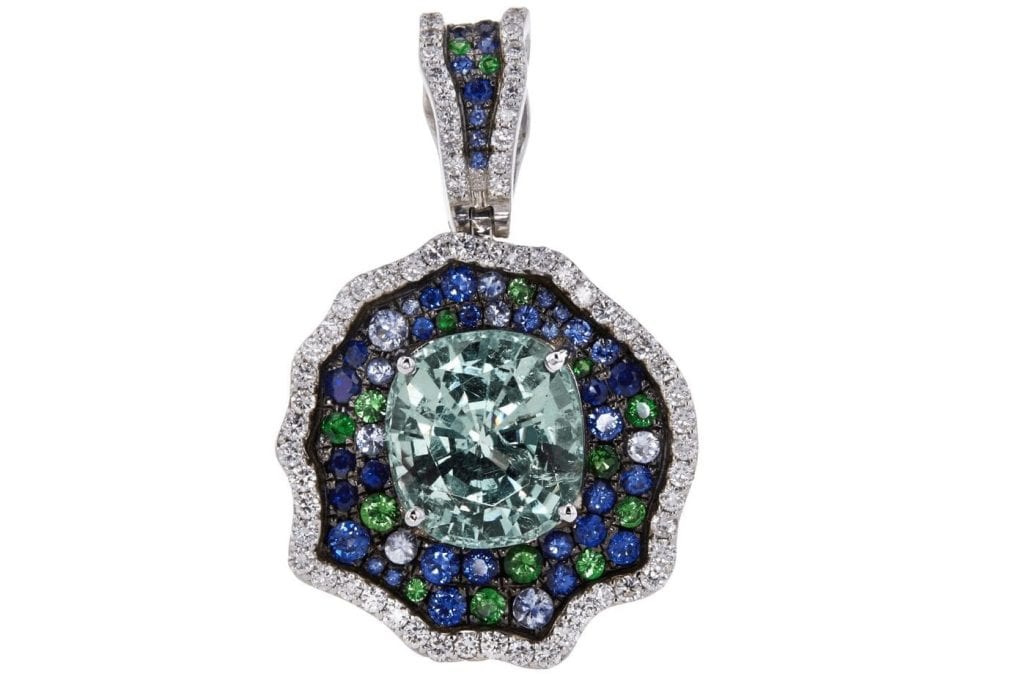
Tourmaline might be familiar because of its use in hair dryers and audio equipment. The stone has some unique electrical properties, generating a weak electrical current that converts moisture in the air to safe negative ions. This helps tame frizz during a blowout and makes stereos sound better. Tourmaline occurs in many different colors, each imbued with different healing properties. Black tourmaline is believed to protect the wearer and give a sense of self-confidence; pink embodies love, compassion, and gentleness, and green tourmaline promotes courage, strength, and stamina.
Most tourmaline today comes from Brazil but it’s also found in Africa, Asia Minor, and even California and Maine.
Topaz is the traditional birthstone for November. Although a deep yellow-orange is the color most people associate with topaz (hence citrine being its alternative) topaz comes in a variety of hues including colorless, light blue, pink, violet, brown and, rarely, red. (FYI, most blue topaz is the result of treating colorless topaz with irradiation and heating.) The ancient Greeks believed topaz gave strength; Europeans from the Middle Ages through the Renaissance thought it could thwart magic spells and dispel anger, and in India it was believed that topaz worn above the heart assures long life, beauty, and intelligence. The best quality topaz comes from Brazil.
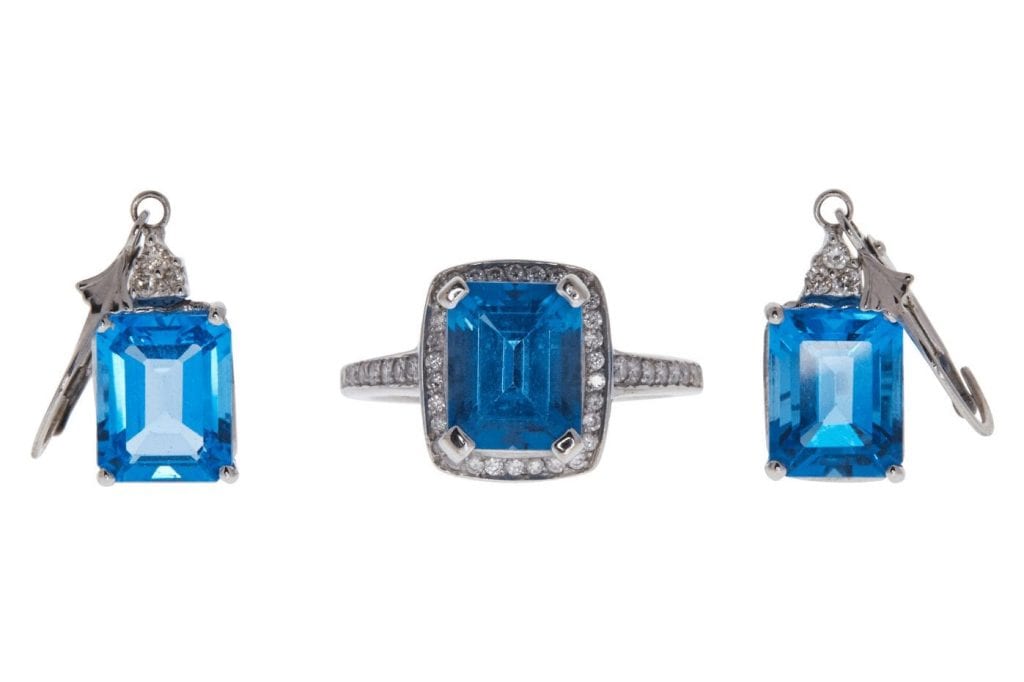
While topaz isn’t the most expensive gem, a fine one can still be costly. Citrine, a yellow quartz, is a great budget-friendly alternative and because it’s so similar in color, people assumed it was topaz and ascribed the same powers to it. Like ruby and sapphire, citrine and amethyst are gem twins. In fact, sometimes they blend into one another, called—wait for it—ametrine. Citrine is found mostly in Mexico, Uruguay, and Bolivia, as well as Spain and Madagascar.
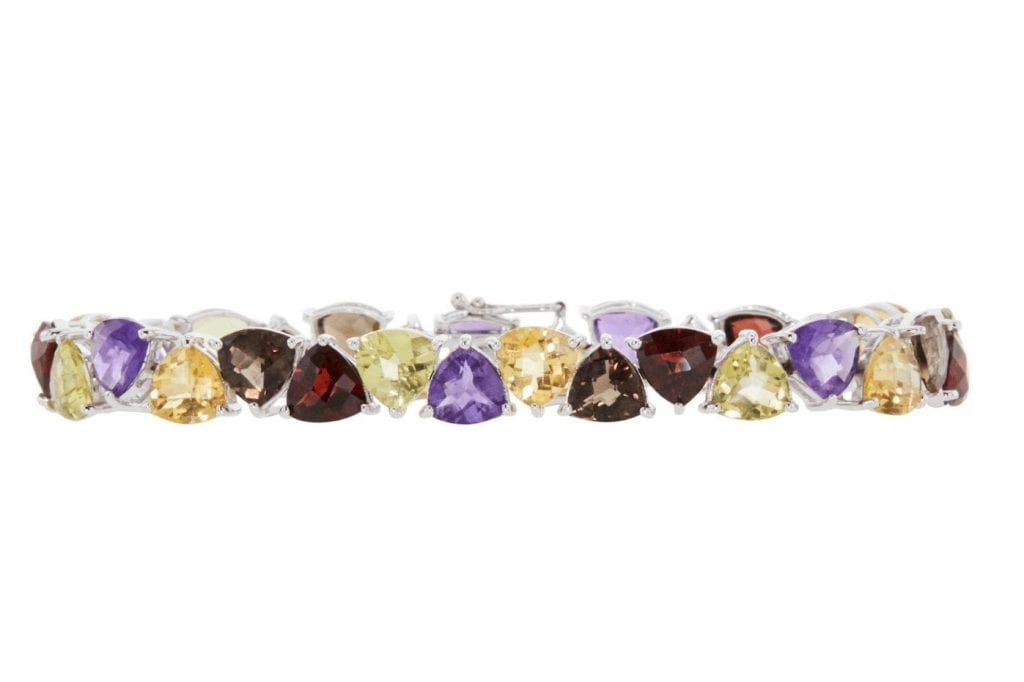
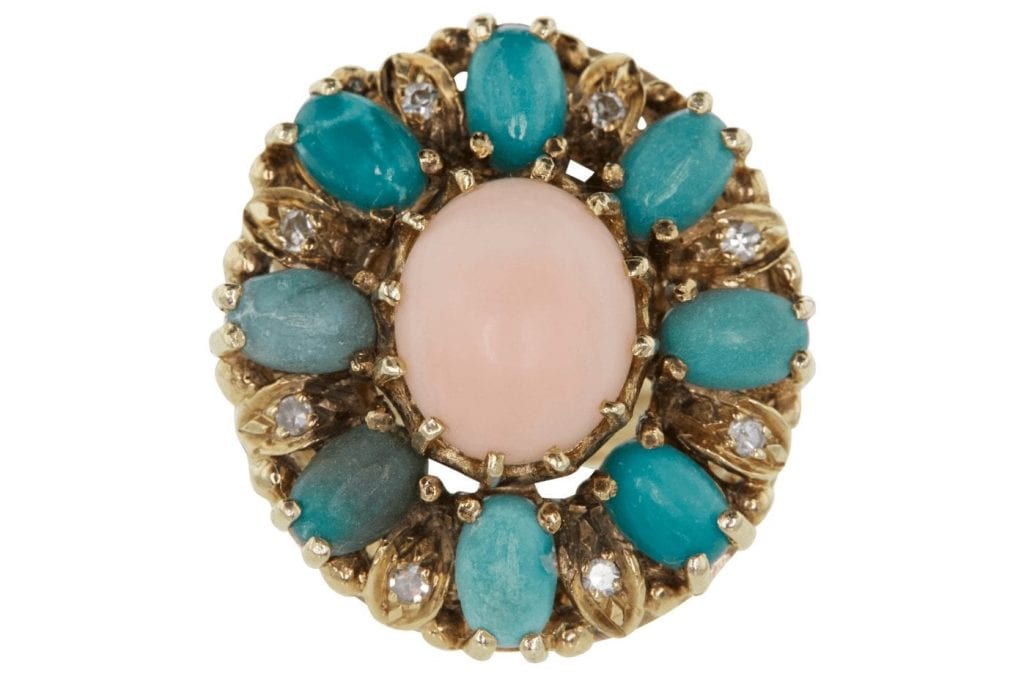
December also has three birthstones: turquoise, Tanzanite, and zircon. Turquoise, one of the few opaque birthstones, has been treasured for millennia. Egyptian Pharaohs wore it and Chinese artisans carved it more than 3,000 years ago. Among its many beneficial powers, it was believed to guarantee health and good fortune, to protect the wearer from falling (especially off horses), and bring peace. Conversely, it was believed that a turquoise would break into several pieces at the approach of disaster. Hindu mystics said seeing a turquoise right after the new moon brought great wealth.
It’s one of the few stones with a rich local tradition, prized by Native Americans. The Apache thought it was found at the end of a rainbow, and that attaching them to a bow or firearm would make the user’s aim more accurate. The Pueblo believed turquoise’s color came from the sky, and the Hopi believed it came from lizards scurrying over the earth. Once predominantly found in the southwestern United States; today most turquoise comes from China.

We can thank Tiffany & Co. for Tanzanite’s popularity and addition to the December birthstone roster. When the velvety blue-violet zoisite was discovered in the 1960s in Tanzania, Tiffany became its main distributor, launching a major advertising campaign in 1968 to promote it. With high clarity and vivid color, Tanzanite lends itself well to large stones and quickly became a sensation. It’s only found in one small area of Tanzania, and those deposits are almost depleted, so keep an eye on its value and be gentle with it. Save a tanzanite ring for special occasions and if you want to wear it every day, stick to a pendant or earrings, which get less wear and tear. And never use an ultrasonic or steam cleaner on it; stick to warm soapy water and a soft cloth.

Last, but certainly not least, is zircon. Not to be confused with cubic zirconia (a chemically different man made diamond simulant), zircon is named in Exodus as one of the original stones in the breastplate of Aaron. It comes in almost every color, including colorless which, with the stone’s natural brilliance, can be confused with diamond. Zircon occasionally can display chatoyancy, or the cat’s eye effect.
Most often found in Sri Lanka, Australia, Myanmar, Vietnam and Cambodia, a fun fact is that zircon deposits are often found near sapphire deposits.
Zircon is about 6.5 – 7.5 on the Mohs scale of hardness. Like amethyst, you could wear it in a ring but don’t do housework in it as it can scratch if you’re not careful with it.
©2011-2025 Worthy, Inc. All rights reserved.
Worthy, Inc. operates from 25 West 45th St., 2nd Floor, New York, NY 10036